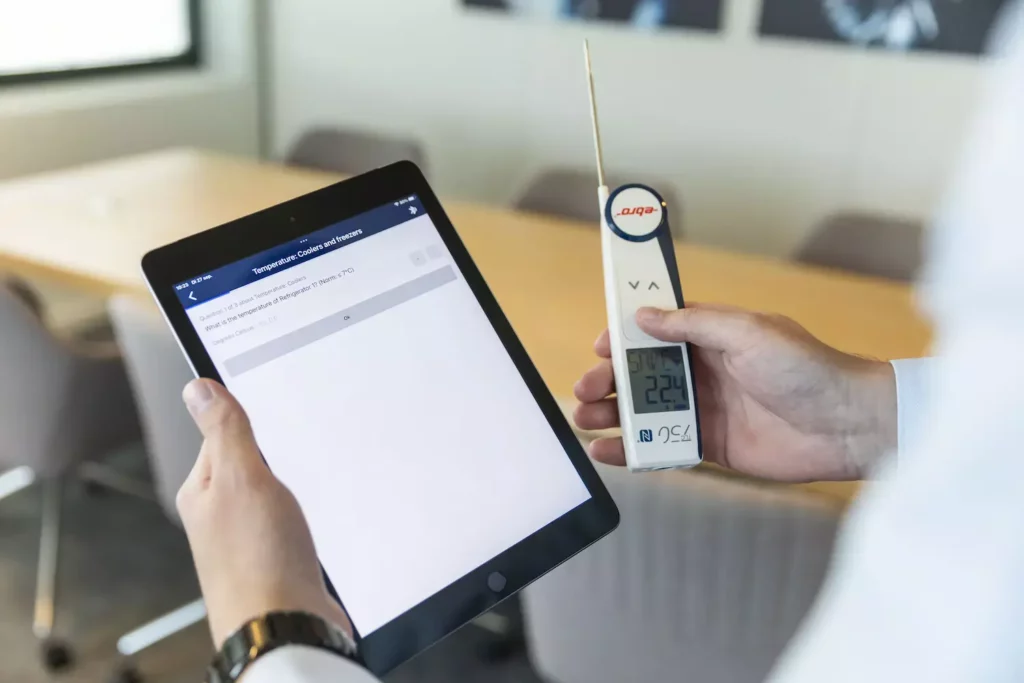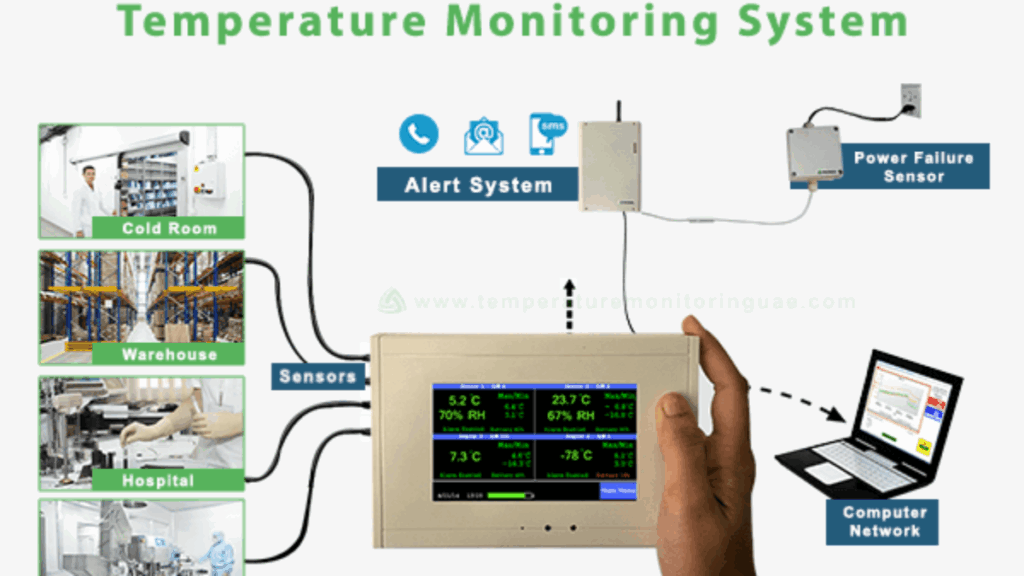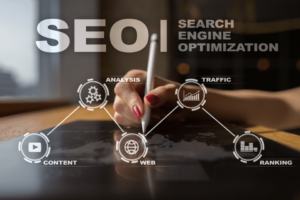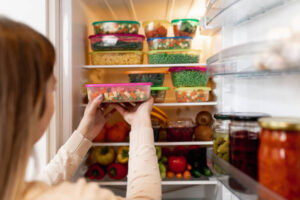Remote Temperature Monitoring Australia: Real-Time Safety Solutions
What Is Remote Temperature Monitoring and Why Is It Essential in Australia?
Remote temperature monitoring is an advanced technology solution that continuously tracks temperature conditions in various environments using wireless sensors and cloud-based platforms. These systems automatically collect, send, and store temperature data in real-time, eliminating the need for manual checks and providing round-the-clock monitoring of critical assets.
The importance of maintaining the right temperature goes beyond just being comfortable. In Australia’s diverse climate, it’s crucial to use remote temperature monitoring systems to keep specific levels for:
- Product integrity – Preventing spoilage and contamination in food products
- Regulatory compliance – Meeting strict Australian food safety standards
- Risk mitigation – Reducing financial losses from temperature fluctuations
- Operational efficiency – Streamlining monitoring processes across multiple locations
Australia has strict rules that require careful temperature management in different industries. The Australian New Zealand Food Standards Code mandates businesses to keep detailed temperature records for refrigerated and frozen goods. Healthcare facilities must follow the guidelines set by the Therapeutic Goods Administration (TGA) for storing pharmaceuticals, while aged care providers are under additional scrutiny from the Aged Care Quality Standards.
These regulations create a complicated compliance environment where manual monitoring cannot ensure the accuracy and consistency needed. Remote temperature monitoring in Australia offers automated documentation, real-time data logging, and immediate alerts—making it the most reliable solution for businesses that must meet strict regulations while safeguarding both consumers and operations.quences of temperature-related failures.

How Do Remote Temperature Monitoring Systems Work?
1. Wireless Temperature Sensors: The Backbone of Monitoring Systems
Wireless temperature sensors form the foundation of modern monitoring systems, utilising advanced radio frequency technology to capture and transmit temperature readings without physical connections. These sensors operate on low-power networks, enabling continuous data collection whilst maintaining extended battery life. The sensors automatically record measurements at predetermined intervals, creating a comprehensive temperature profile for your monitored environment.
2. Real-Time Data Collection: Instant Alerts for Critical Situations
Real-time data collection occurs through sophisticated wireless protocols that ensure reliable transmission even in challenging environments. The sensors communicate directly with gateway devices or cloud-based receivers, eliminating the need for manual data retrieval. This automated approach guarantees you receive immediate alerts when temperature thresholds are breached, enabling swift corrective action.
3. SaaS Platforms for Monitoring: Centralised Control and Accessibility
SaaS platforms for monitoring serve as the central hub where all collected data converges. These secure cloud-based systems provide 24/7 accessibility through any internet-connected device, allowing you to monitor multiple locations simultaneously. The platforms feature intuitive dashboards that display current readings, historical trends, and compliance reports in real-time.
4. Automated Record Keeping: Accuracy and Compliance Made Easy
Automated record keeping capabilities eliminate human error whilst ensuring regulatory compliance. The systems generate detailed audit trails, automatically documenting every temperature reading with precise timestamps. You can customise alert parameters, set up automated reporting schedules, and access comprehensive analytics that help optimise your temperature-sensitive operations. These platforms integrate seamlessly with existing business systems, streamlining your compliance workflows without disrupting daily operations.
More about:Fridge Monitoring Systems: Keeping Food Safe and Fresh
Which Industries Benefit Most from Remote Temperature Monitoring in Australia?
Hospitality
Hospitality temperature monitoring has become indispensable for restaurants, cafes, and food service establishments across Australia. You need precise temperature control to meet stringent food safety regulations whilst maintaining operational efficiency. Modern systems track refrigeration units, food storage areas, and preparation zones, automatically generating compliance reports that satisfy health department requirements. The technology eliminates manual temperature logging, reducing human error and ensuring your staff can focus on customer service rather than paperwork.
Healthcare
Healthcare environmental monitoring extends beyond simple temperature tracking to encompass humidity and air pressure measurements. You’ll find these comprehensive systems essential in hospitals, aged care facilities, and pharmaceutical storage areas where environmental conditions directly impact patient safety and medication efficacy. The sensors continuously monitor operating theatres, vaccine storage units, and patient rooms, alerting staff immediately when conditions drift outside acceptable parameters.
Cold Chain Logistics
Cold chain logistics Australia relies heavily on remote monitoring for refrigerated transport and storage facilities. You can track temperature variations in real-time across multiple compartments during deliveries, ensuring products maintain their integrity from warehouse to destination. The technology provides detailed documentation for insurance claims and regulatory audits, whilst reducing spoilage rates significantly. Transport companies use these systems to monitor door opening times and temperature fluctuations during loading and unloading procedures, maintaining the cold chain’s integrity throughout the entire supply process.
How Do Companies Like Squizify Support Food Safety and Operational Compliance?
Squizify food safety management represents a comprehensive approach to operational excellence that addresses the complex compliance requirements facing Australian businesses. The platform serves as a centralised hub for managing critical safety protocols across multiple industries, from hospitality venues to healthcare facilities.
The system’s tailor-made checklists form the backbone of its compliance framework. You can create customised inspection protocols that align with your specific operational requirements and regulatory obligations. These digital checklists eliminate the guesswork from compliance procedures, ensuring your team follows consistent protocols every time they conduct temperature checks or safety inspections.
Automated record keeping, which is a crucial aspect of electronic record-keeping, transforms how you manage compliance documentation. The platform captures and stores all temperature readings, inspection results, and audit trails without manual intervention. You gain access to comprehensive reporting capabilities that demonstrate regulatory compliance to auditors and inspectors with just a few clicks.
Key features that set Squizify apart include:
- Real-time monitoring dashboards for immediate visibility into critical parameters
- Customisable alert systems that notify you instantly when temperatures exceed safe ranges
- Comprehensive auditing tools that track all system interactions and changes
- 24/7 data accessibility through secure cloud-based infrastructure
The automation capabilities deliver significant time and cost savings by reducing manual documentation tasks. You can redirect staff resources from paperwork to customer service and core business activities whilst maintaining rigorous compliance standards. The platform’s secure SaaS architecture ensures your Remote Temperature Monitoring Australia: Real-Time Safety Solutions remain accessible from any internet-connected device.
What Are the Advantages of Using Advanced Solutions Like Cooltrax for Cold Chain Logistics?
Cooltrax wireless tracking transforms refrigerated transport operations through purpose-built monitoring systems designed specifically for trucks and trailers. These specialised solutions address the unique challenges of maintaining temperature integrity during transit, where traditional monitoring methods often fall short.
The technology delivers real-time tracking of compartment temperatures alongside critical operational metrics such as door open times during deliveries. You gain instant visibility into temperature fluctuations that could compromise product quality, enabling immediate corrective action before damage occurs. Door monitoring capabilities provide additional protection by alerting you to extended exposure periods that might affect temperature-sensitive cargo.
Benefits of Cooltrax for Refrigerated Transport Monitoring
- Reduced Spoilage Rates: The precise data collection helps you identify patterns that lead to product loss, allowing you to optimise delivery routes and handling procedures. This reduction in spoilage translates to significant cost savings across your cold chain operations.
- Lower Insurance Premiums: Many insurers offer reduced premiums for businesses using comprehensive monitoring systems, recognising the decreased risk of temperature-related claims. The detailed audit trails generated by these systems also strengthen your position during insurance assessments.
- Simplified FSMA Compliance: Requirements become manageable through automated documentation and reporting features. The system maintains continuous records that satisfy regulatory demands whilst reducing the administrative burden on your team, ensuring you meet food safety standards without compromising operational efficiency.
How Does Environmental Monitoring Enhance Safety in Healthcare Settings?
Healthcare temperature monitoring in Australia has evolved beyond basic temperature tracking to encompass comprehensive environmental oversight. Companies like CenTrak environmental sensors provide integrated monitoring solutions that simultaneously track temperature, humidity, and air pressure across healthcare facilities. This multi-parameter approach ensures optimal conditions for medication storage, laboratory samples, and patient comfort zones.
The technology extends far beyond environmental monitoring alone. Modern systems incorporate:
- Asset tracking capabilities that monitor the location and condition of critical medical equipment
- Emergency call systems integrated directly into the monitoring infrastructure
- Real-time alerts for staff when environmental parameters exceed safe thresholds
- Automated documentation that eliminates manual logging errors
Regulatory compliance healthcare requirements demand meticulous record-keeping for pharmaceutical storage, vaccine management, and laboratory specimen preservation. Environmental monitoring systems automatically generate compliance reports that meet Australian Therapeutic Goods Administration (TGA) standards and hospital accreditation requirements.
The integration of multiple monitoring functions creates a comprehensive safety net. When temperature sensors detect fluctuations in a pharmacy refrigerator, the system simultaneously logs humidity levels and triggers immediate notifications to responsible staff members. This interconnected approach prevents product degradation and maintains the integrity of temperature-sensitive medications and vaccines.
You can rely on these advanced monitoring systems to reduce compliance risks whilst protecting valuable medical inventory through continuous environmental oversight.
What Makes Australian Remote Temperature Monitoring Solutions Different from Others?
Australian remote monitoring innovation stands out because it has a deep understanding of local rules and regulations, as well as the specific challenges faced by different industries. Companies operating in Australia have to deal with unique compliance standards in areas such as food safety, healthcare, and cold chain logistics. This requires specialised knowledge of protocols like HACCP, regulations set by the TGA (Therapeutic Goods Administration), and requirements imposed by state health departments.
The competitive advantage lies in localised expertise that addresses distinctly Australian industry needs. Local providers understand the complexities of operating across diverse climate zones, from tropical Queensland to temperate Tasmania, where temperature fluctuations can significantly impact product integrity. This geographical awareness translates into monitoring solutions designed specifically for Australian conditions.
Customizable software solutions Australia offers represent another key differentiator. Instead of using international platforms that may not fully meet their needs, Australian providers focus on developing customised solutions through thorough discovery processes:
- Discovery calls that explore specific operational workflows
- Live demonstrations showcasing relevant features for your industry
- Tailored configuration matching existing compliance procedures
- Industry-specific templates for hospitality, healthcare, and logistics sectors
The personalisation goes beyond just software configuration. It also includes selecting hardware components, setting up alert parameters based on local preferences, and creating reporting structures that align with Australian business practices. This ensures that the solutions provided are not only effective but also compatible with existing quality management systems used by businesses in Australia.
By taking this approach, Remote Temperature Monitoring Australia: Real-Time Safety Solutions aims to provide maximum value to its customers. The focus is on delivering functionalities that are directly applicable to their operations rather than generic features that may not address specific challenges they face in their day-to-day activities.

How Can Businesses Get Started with Remote Temperature Monitoring Solutions?
Onboarding remote monitoring systems Australia requires a structured approach that ensures you maximise your investment from day one. The process begins with understanding your specific operational requirements through comprehensive consultation.
Initial Consultation and Discovery
Your journey starts with a discovery call where specialists assess your current temperature monitoring challenges. These sessions identify critical monitoring points, compliance requirements, and integration needs specific to your industry. You’ll discuss existing workflows, regulatory obligations, and operational pain points that remote monitoring can address.
Demonstration and System Customisation
Following consultation, you’ll receive a tailored demo session showcasing how the technology applies to your specific environment. These demonstrations aren’t generic presentations—they’re customised walkthroughs using your actual use cases and scenarios. You’ll see exactly how sensors integrate with your existing systems and how data flows through secure platforms.
Personalised Implementation Process
Personalised onboarding proves essential for maximising system benefits. Your implementation team guides you through:
- Sensor placement optimisation based on your facility layout
- Custom alert configuration matching your operational schedules
- Staff training programmes ensuring confident system operation
- Integration setup with existing compliance management tools
This hands-on approach ensures you’re not just purchasing technology—you’re implementing a complete Remote Temperature Monitoring Australia: Real-Time Safety Solutions strategy that transforms your operational compliance and safety management capabilities.
Learn about:Fridge Monitoring Systems: Keeping Food Safe and Fresh
FAQs on Remote Temperature Monitoring in Australia
Remote temperature monitoring is a system that uses wireless sensors and cloud-based platforms to track, record, and alert users about temperature changes in real time, eliminating the need for manual checks.
Australia’s diverse climate and strict compliance regulations make remote monitoring crucial for protecting food, pharmaceuticals, and other temperature-sensitive products while ensuring businesses meet safety standards.
Key industries include hospitality, healthcare, cold chain logistics, aged care, and pharmaceuticals—any sector where precise temperature control is vital for safety, compliance, and efficiency.
These systems rely on wireless sensors that record temperature at regular intervals, transmit data to cloud platforms, and trigger real-time alerts if safe ranges are breached.
Businesses must follow regulations such as the Australian New Zealand Food Standards Code for food safety, TGA guidelines for pharmaceuticals, and Aged Care Quality Standards for healthcare facilities.
Automation eliminates human error, provides accurate real-time alerts, generates digital compliance reports, and reduces labour costs by streamlining monitoring processes.
Yes. By preventing spoilage, contamination, and product degradation, businesses can minimise waste, reduce insurance claims, and lower operating costs.
Platforms like Squizify ensure food safety and compliance through digital checklists and automated reporting, while Cooltrax provides real-time cold chain monitoring for transport and logistics.
Australian providers design solutions tailored to local regulations, climate challenges, and industry needs, offering customised alerts, reports, and compliance features.
Businesses typically begin with a consultation to identify their needs, followed by a customised demo, system installation, staff training, and integration with existing compliance tools.


